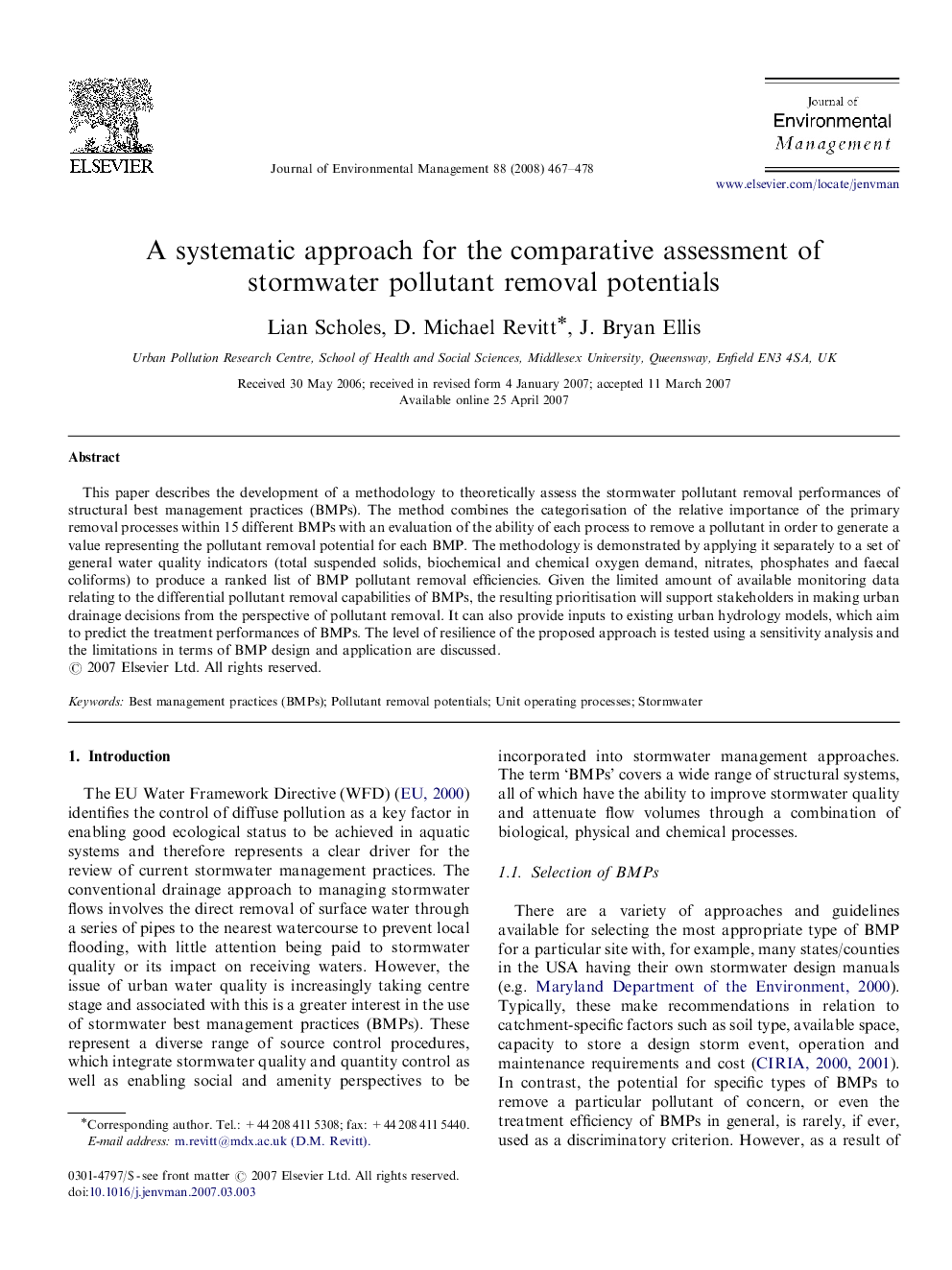| Article ID | Journal | Published Year | Pages | File Type |
|---|---|---|---|---|
| 1058626 | Journal of Environmental Management | 2008 | 12 Pages |
This paper describes the development of a methodology to theoretically assess the stormwater pollutant removal performances of structural best management practices (BMPs). The method combines the categorisation of the relative importance of the primary removal processes within 15 different BMPs with an evaluation of the ability of each process to remove a pollutant in order to generate a value representing the pollutant removal potential for each BMP. The methodology is demonstrated by applying it separately to a set of general water quality indicators (total suspended solids, biochemical and chemical oxygen demand, nitrates, phosphates and faecal coliforms) to produce a ranked list of BMP pollutant removal efficiencies. Given the limited amount of available monitoring data relating to the differential pollutant removal capabilities of BMPs, the resulting prioritisation will support stakeholders in making urban drainage decisions from the perspective of pollutant removal. It can also provide inputs to existing urban hydrology models, which aim to predict the treatment performances of BMPs. The level of resilience of the proposed approach is tested using a sensitivity analysis and the limitations in terms of BMP design and application are discussed.
